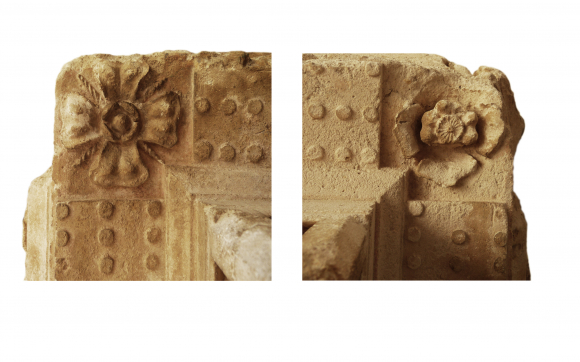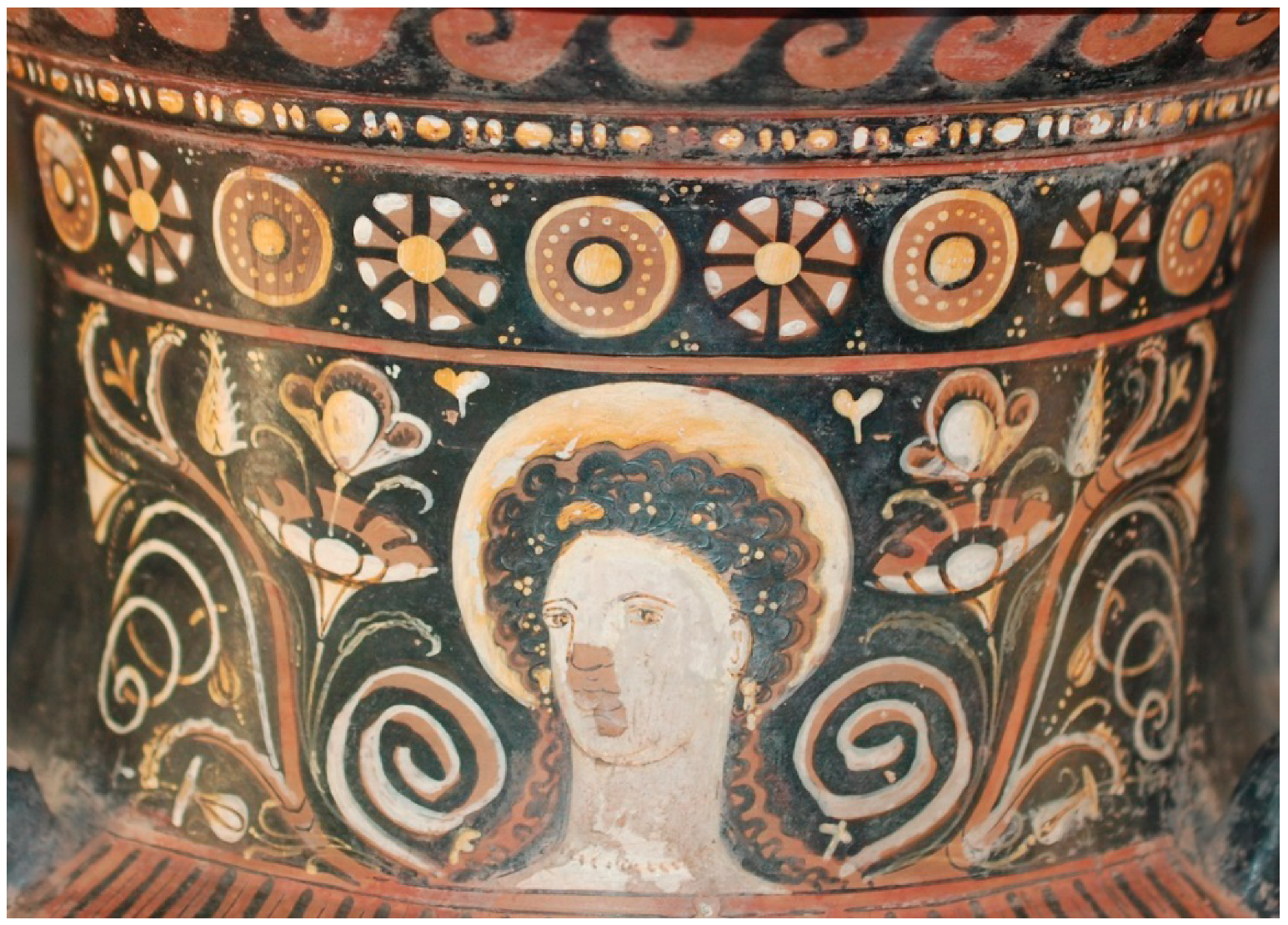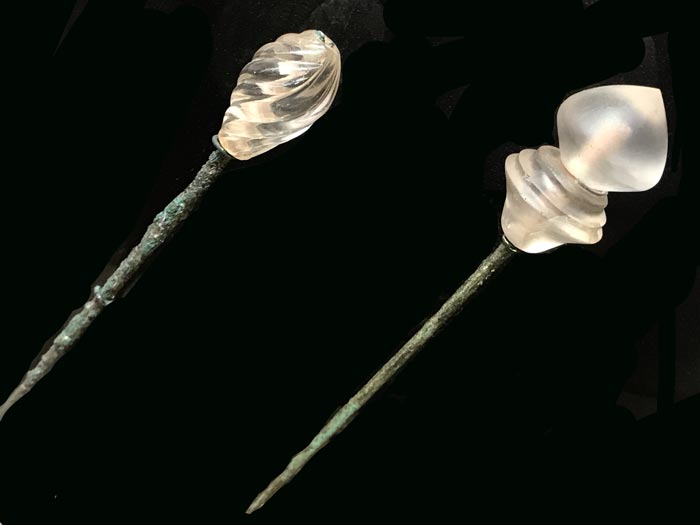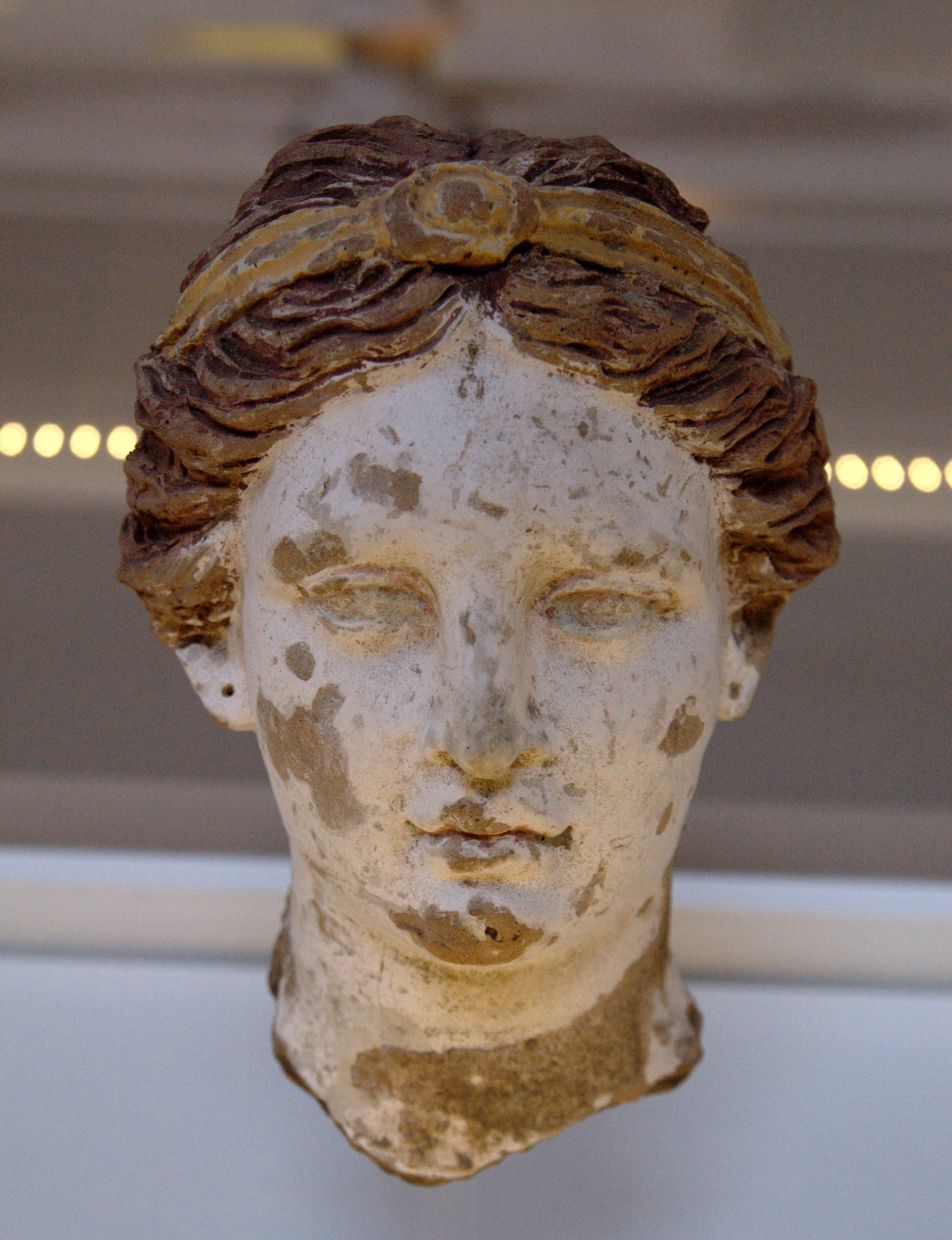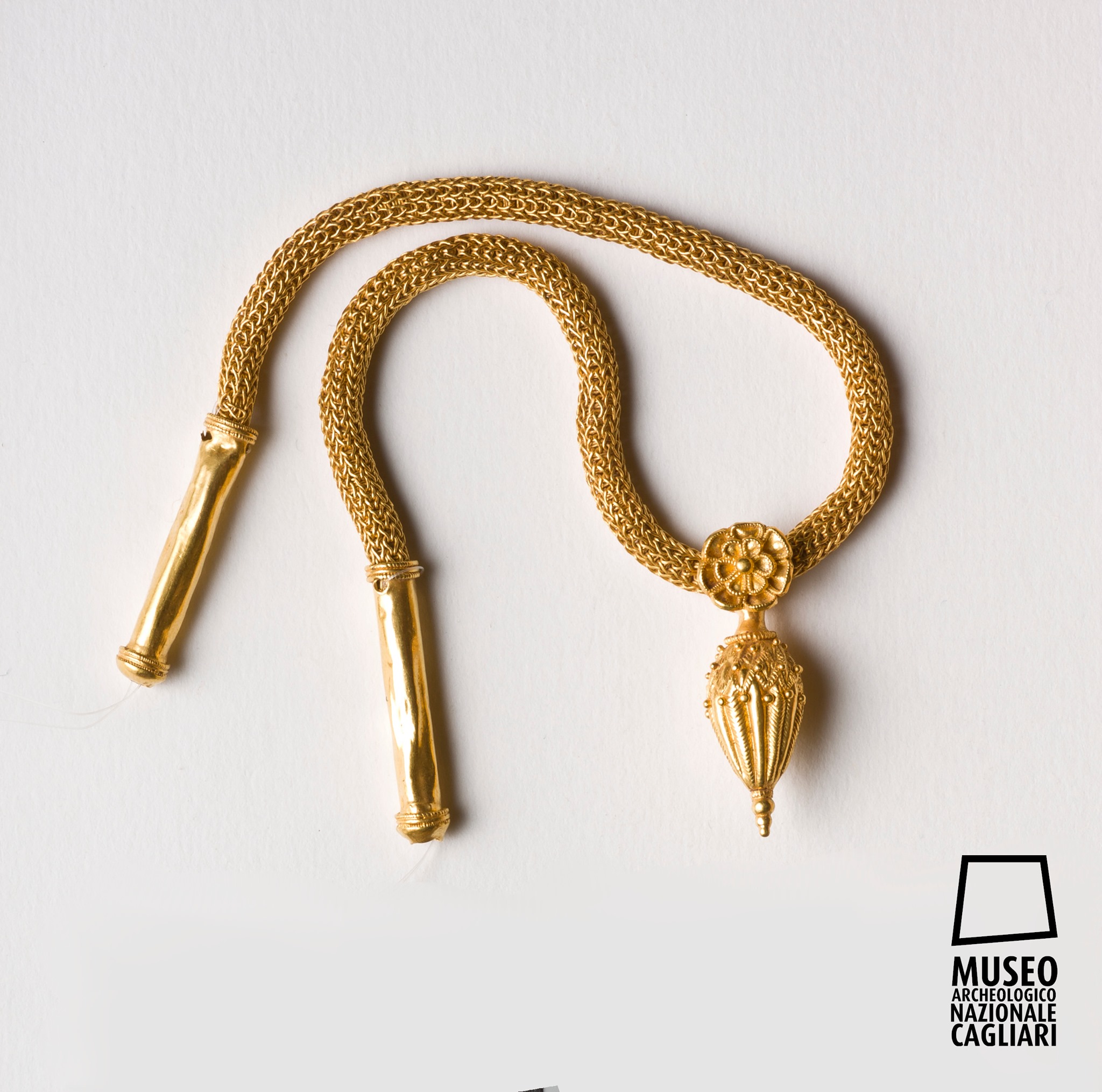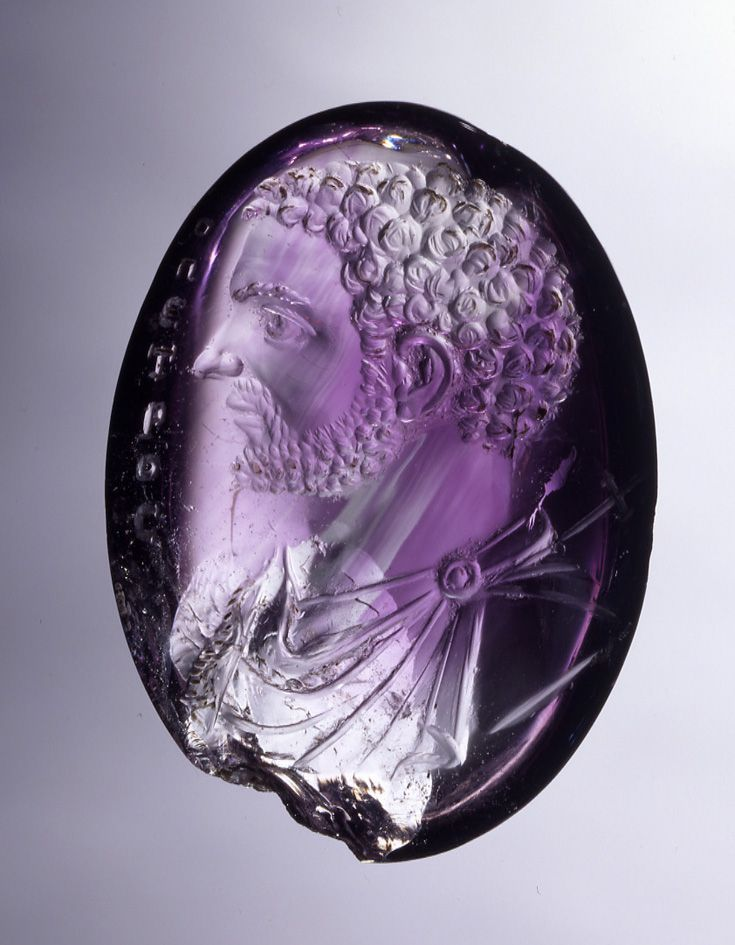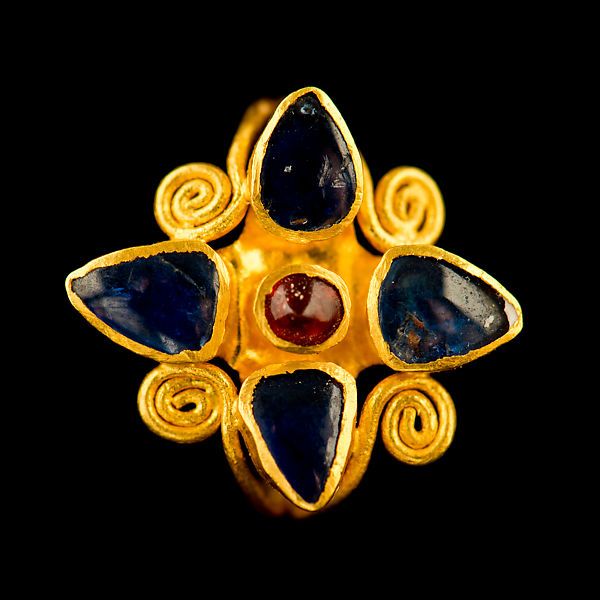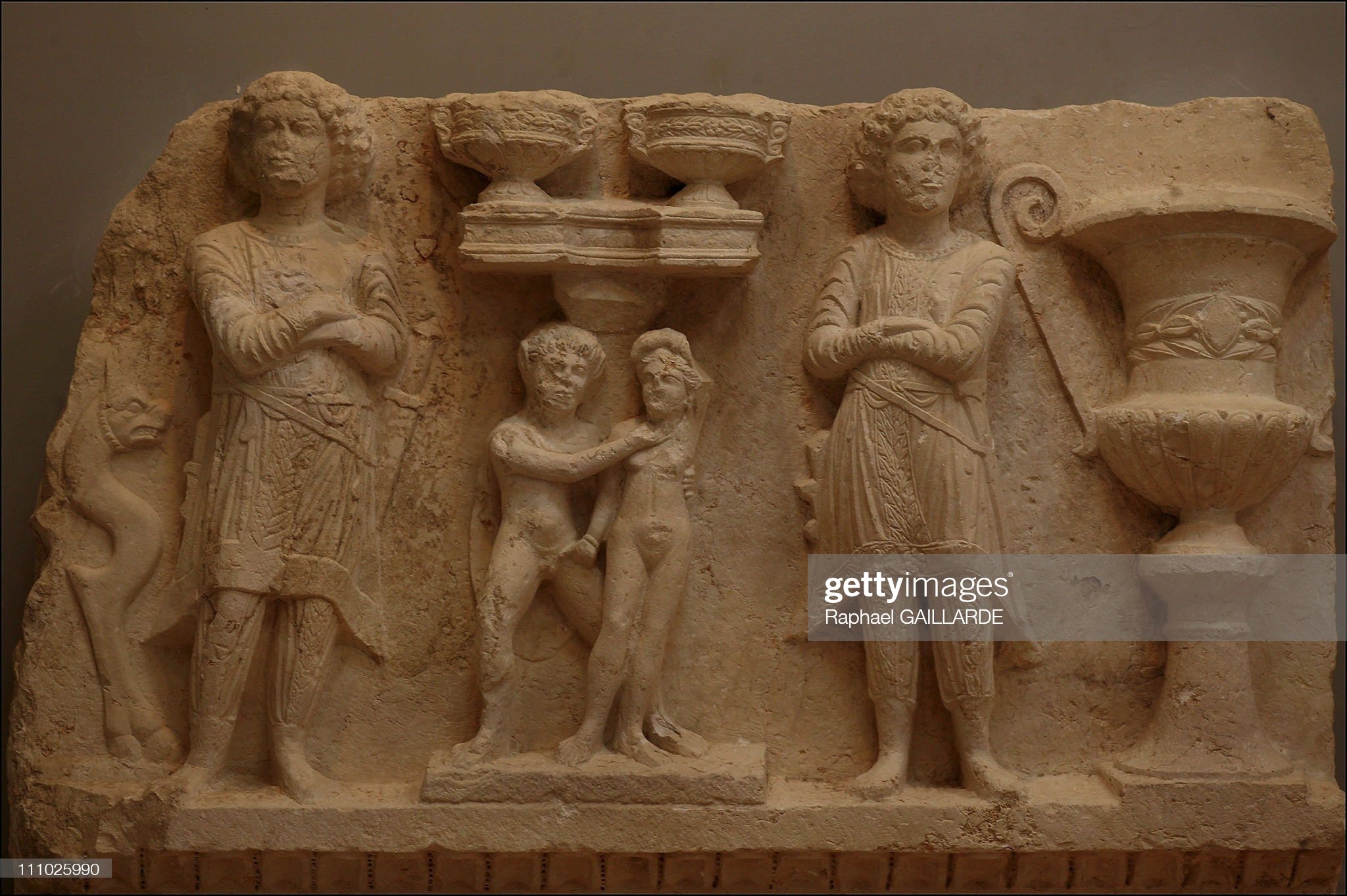“Regina Vasorum” is a large black glazed hydria (water carrier) decorated with two reliefs. The narrow band shows griffins, lions and panthers. The polychrome relief in the upper part of a vase depicts the deities of the Eleusinian circle: Demeter holding a scepter; Persephone (Kore), goddess of the Underworld, holding a torch; the young Dionysus holding a thyrsus; Athena sitting on a rock; Hecate holding two torches, Artemis and Aphrodite.
Dionysus appears next to Demeter in the scene depicting the meeting of Demeter and Kore. Dionysus, with thyrsus and a crown of ivy, wears a double robe, white and edged with gold, and a blue himation with a golden hem, while a tripod emerges behind him; on the opposite side is Herakles, with the typical attribute of Demeter, the little pig.
“The figures were modelled separately and then attached to the surface by means of fluid clay. They are painted white, blue and purple, and also gilded. The depicted motifs go back to the original sculptures of the 4th century BCE. It should be noted that the use of painted bas-reliefs instead of drawings could be caused by the fact that the artists sought to be in keeping with the latest achievements in monumental painting, adopting the three-dimensional modelling and rich coloring, typical of the latter.”
The vase was found in a tomb in Cumae, Southern Italy, and is dated back to the third quarter of the fourth century BCE. Bought from the Campana collection is kept in the Hermitage Museum, St. Petersburg.

- Demeter
- Persephone
- Athena
- Aphrodite
- Artemis
- Triptolemus (Eleusinian hero)
- Hierophant (chief priest at the Eleusinian Mysteries)
- The Temple priest or Heracles (holding a pig)
- The Herald
- Hekate





The vase in the Hermitage Museum, St. Petersburg [link]
Dioniso e Arianna in un ipogeo dei Cristallini: la religiosità dionisiaca dei chariestatoi di Neapolis [Dionysus and Ariadne in a crystalline hypogeum: the Dionysian religiosity of the Neapolis chariestatoi]
Lucia A. Scatozza Höricht p. 427-450 https://doi.org/10.4000/mefra.5322
See also an article The Mysteries >> [link]

